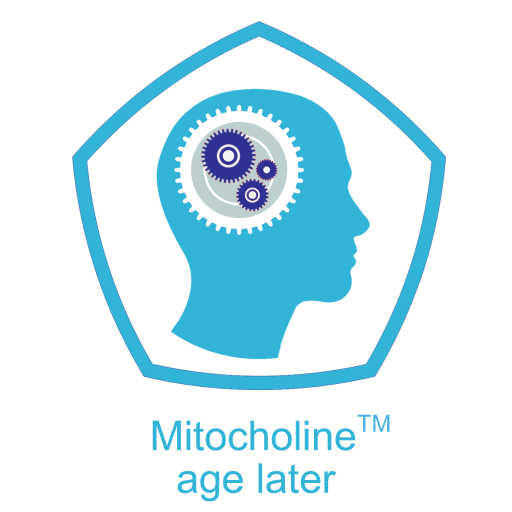Proof of Concept
Numerous proof-of-concept studies have been performed in several European countries (UK, France, Germany, Finland, Netherlands, Portugal, and Russia) by world-class scientists in top research centres including Maastricht University, C. Bernard University, University of Wuerzburg, Universidade Nova de Lisboa, and Oxford University.
Proof-of-Concept Studies in Animals
The following results have been obtained in proof-of-concept studies in animals:
- Mitocholine significantly ameliorates cognitive deficits of different origin:
- cognitive deficits caused by normal aging in mice; battery of tests included open field, step-down avoidance, Morris water maze, and 1H NMR in vivo (Storozheva et al, 2008);
- cognitive deficits caused by chronic cerebral hypoperfusion in two-vessel occlusion model of vascular dementia and AD in rats; battery of tests included step-through passive avoidance, Morris water maze, and 1H NMR in vivo tests (Storozheva et al, 2008; Pomytkin et al, 2007);
- cognitive deficits induced by the administration of beta-amyloid peptide 25-35 into the nucleus basalis magnocellularis in model of amyloid-induced AD in rats; battery of tests included step-through passive avoidance and cortex ChAT activity tests (Storozheva et al, 2008);
- cognitive deficits induced by acute scopolamine, a muscarinic antagonist, in scopolamine-induced amnesia model in rats; passive avoidance test (Report C126007, 2007);
- cognitive deficits induced by chronic stress-induced disruption of contextual learning and memory in chronic stress model in mice; battery of tests included step-down avoidance and fear conditioning tests (Cline et al, 2012 and 2015);
- hyperactivity in TG2576 Alzheimer’s mice; battery of tests included open field and Y-maze (Report C126107, 2007);
- Mitocholine significantly increases capacity of cholinergic system in the brain:
- increases activity of Choline Acetyltransferase (ChAT), a key enzyme of acetylcholine synthesis, diminished by the injection of beta-amyloid peptide 25-35 into the nucleus basalis magnocellularis; ChAT assay (Storozheva et al, 2008);
- prevents disruption of learning performance induced by scopolamine, a muscarinic antagonist; passive avoidance test (Report C126007, 2007).
- Mitocholine significantly protects the brain against cerebral hypoxia:
- it significantly slowed dynamics of whole-brain decline of energetic substrates ATP and phosphocreatine pCr in the course of global ischemia in cardiac arrest model in rats; 31P NMR in vivo (Pomytkin et al, 2005);
- it significantly protected brain mitochondria from hypoxia-induced swelling in micro-stroke model in Thy1-CFP mice; two-photon laser fluorescent microscopy in vivo (Report 2012, Neurotar);
- it significantly reduced size of endothelin-1-induced lesions in the brain in stroke model in rats (report 2014, Dr. Daniel Anthony);
- it significantly increased whole-brain N-acetylaspartate diminished by chronic cerebral hypoperfusion in two-vessel occlusion model of vascular dementia and AD; 1H NMR in vivo (Storozheva et al, 2008);
- it significantly ameliorated cognitive deficits caused by chronic cerebral hypoperfusion in two-vessel occlusion model of vascular dementia and AD in rats; step-through passive avoidance test (Storozheva et al, 2008; Pomytkin et al, 2007).
- Mitocholine exhibits significant antidepressant-like effects:
- in young adult mice; forced swim test (Cline et al, 2015);
- in aged mice; sucrose preference test (Cline et al, 2015);
- in young adult mice in model of chronic stress-induced depression; forced swim test and sucrose preference test (Cline et al, 2012);
- in young adult mice in model of high cholesterol diet induced depression; forced swim test (Strekalova et al, 2015a);
- in young adult mice in the course of chronic delivery of Mitocholine via food pellets; tail suspension test, forced swim test, and sucrose preference test (Costa-Nunes et al, 2015).
- Mitocholine exhibits significant anxiolytic-like effects:
- in young adult mice in model of chronic stress; dark/light box test (Cline et al, 2012);
- in young naïve mice; O-maze test (Cline et al, 2015).
- Mitocholine affects neuroplasticity in the insulin-like fashion:
- in young adult mice, it significantly upregulated hippocampal expression of set of genes, 41% of which are involved in synaptic plasticity and some of them (Arc, SGK1, and VGF) are known to be upregulated by insulin; Illumina assay (Cline et al, 2015);
- in young adult mice, it significantly inhibited GSK-3β, an enzyme playing the role in several types of synaptic plasticity opposed to those for insulin, via phosphorylation on Ser9; GSK-3β phosphorylation assay (Cline et al, 2015);
- in young adult mice in chronic stress model, it significantly increased hippocampal expression of IGF2, an agonist of neuronal isoform A of insulin receptors and activator of hippocampal neurogenesis; real-time PCR assay (Cline et al, 2012);
- in young adult mice in 5-days stress model, it significantly increased neurogenesis in hippocampal dentate gyrus;
- DCX+ and Ki67 cell assay (Report, 2015. Dr. Strekalova);
- in young adult mice in chronic stress model, it significantly prevented stress-induced increase in NR2A/NR2B subunit ratio in NMDA receptors, i.e. maintains enhanced plasticity; real-time PCR assay (Cline et al, 2015);
- in TG2576 Alzheimer’s mice, it significantly reduced pathologically high activity of insulin degrading enzyme, i.e. prevented excessive degradation of insulin in brains of these mice (Report C126107, 2007).
- Mitocholine upregulates mitochondrial biogenesis in the brain
- via upregulation of expression PPARGC1b, a master transcription co-regulator (Strekalova et al, 2015).
- Mitocholine exhibits significant antiepileptic effects:
- ameliorated epilepsy-like seizures and increases life span; corazole-induced model of primary generalized epilepsy in rats (Rychikhin et al, 2013).
- Mitocholine exhibits significant effects in Parkinson’s disease model
- ameliorated Parkinson’s disease-like motor deficits and muscle rigidity; MPTP-induced model of parkinsonism in rats (Sariev et al, 2011).
